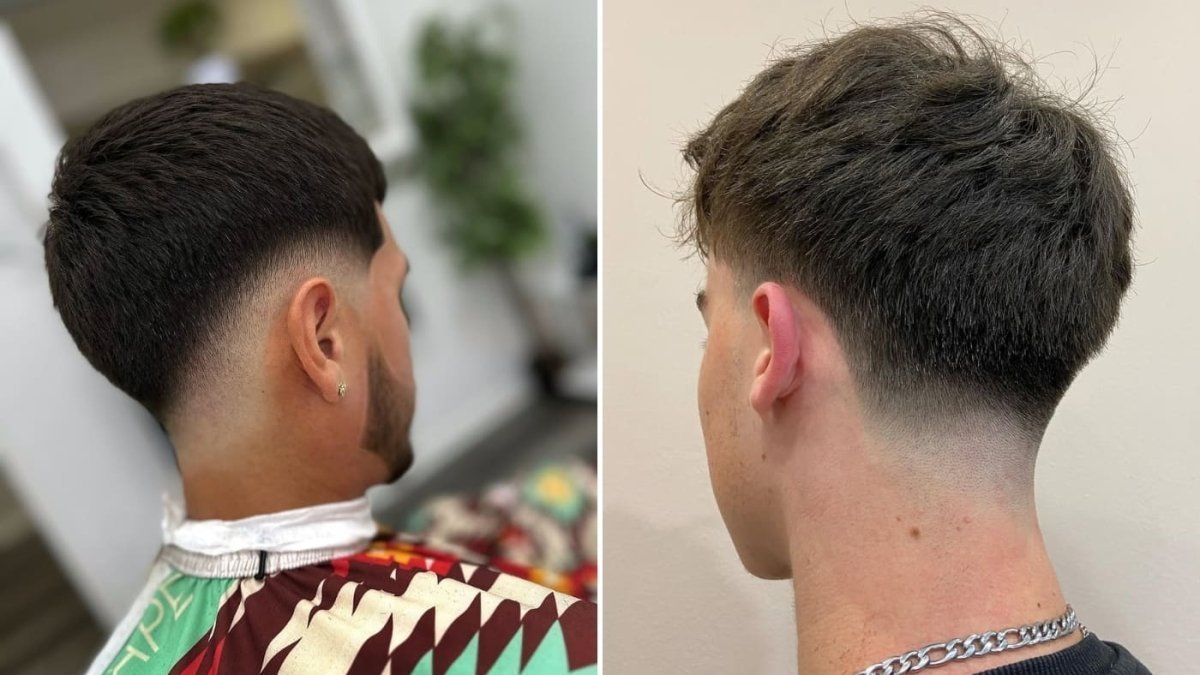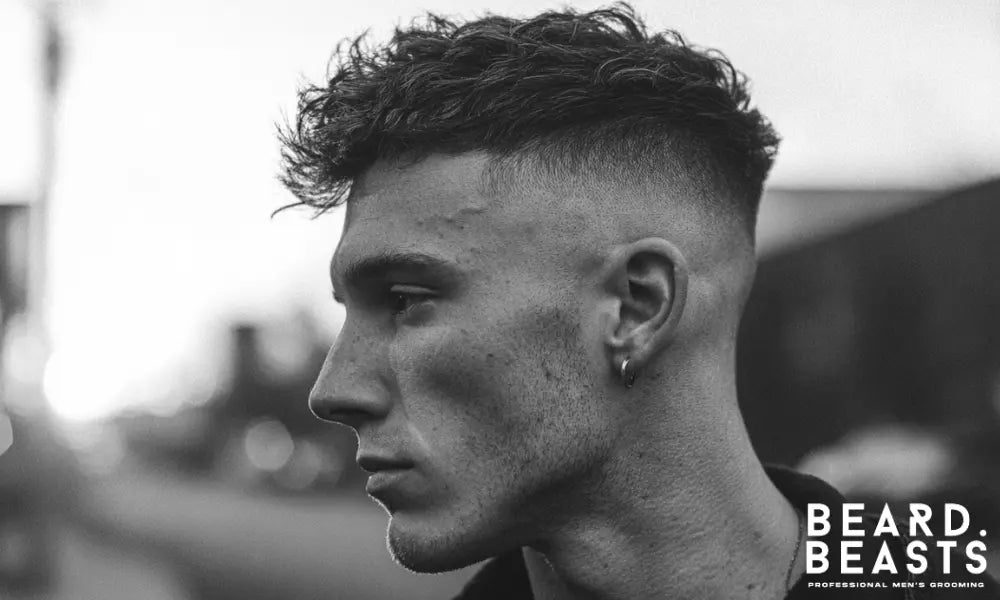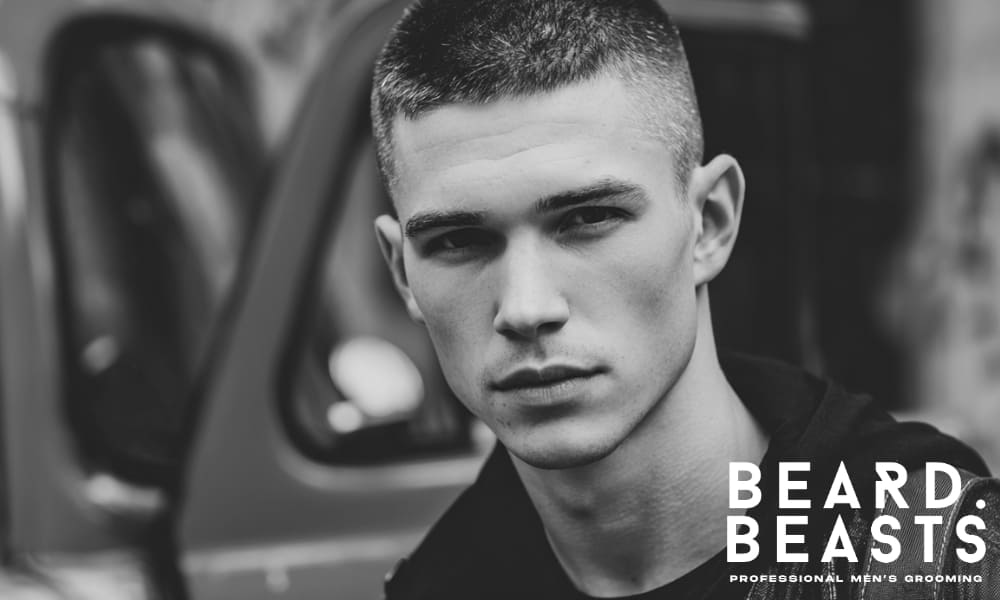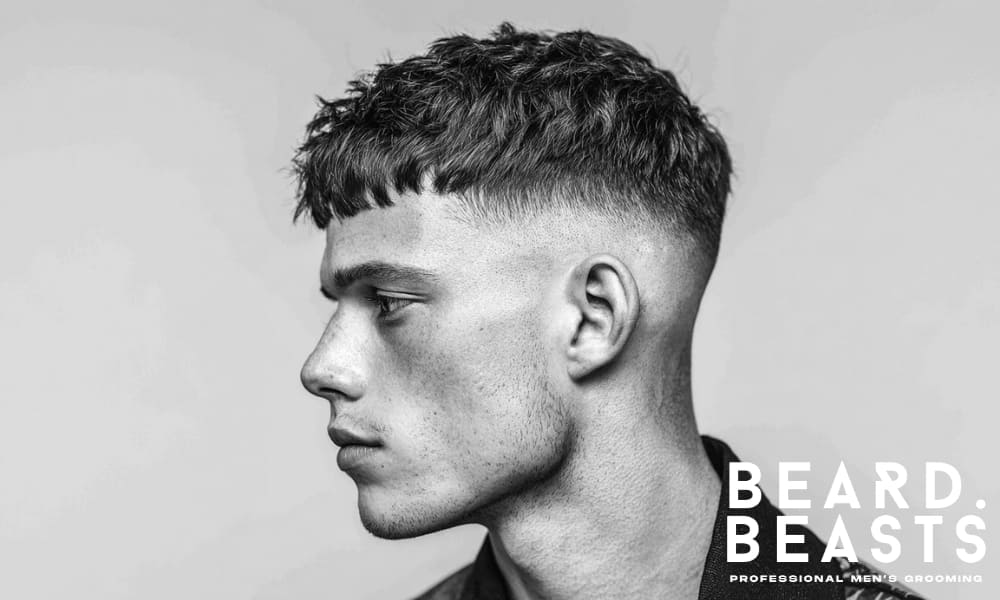Fades are one of the most popular men’s haircuts in 2025, and two styles lead the way: the drop fade and the taper fade. If you’ve ever compared a drop fade vs taper fade, you’ll know they deliver very different results in shape, contrast, and upkeep.
This guide breaks down the differences between the two, shows you the best hairstyles for each, and helps you choose the fade that fits your face shape, hair type, and lifestyle.
What Is a Taper Fade?
A taper fade is a gradual haircut that shortens the hair at the neckline and sideburns while keeping more length on top. The blend is subtle, giving the cut a polished, natural finish that works in both professional and casual settings.
Unlike sharper fade styles, this style grows out evenly and requires less frequent maintenance. It’s a versatile choice that complements most face shapes and adapts easily to different hair types and lengths.
Taper Fade Characteristics
- Blending Style: Gradual and natural, tapering the hair seamlessly from the top into the neckline and sideburns.
- Contrast Level: Soft and subtle, with no harsh fade lines.
- Maintenance: Can last 3–4 weeks before looking overgrown, making it lower upkeep than sharper fades.
- Styling Versatility: Works with both short and medium-length hairstyles, from classic side parts to textured crops.
- Face Shape Suitability: Complements oval, long, and square face shapes by adding structure without overpowering features.
Best Hairstyles for a Taper Fade in 2025
This style works with a wide range of hairstyles, giving each a refined, adaptable finish. Here are four of the best looks for 2025:
Classic Side Part
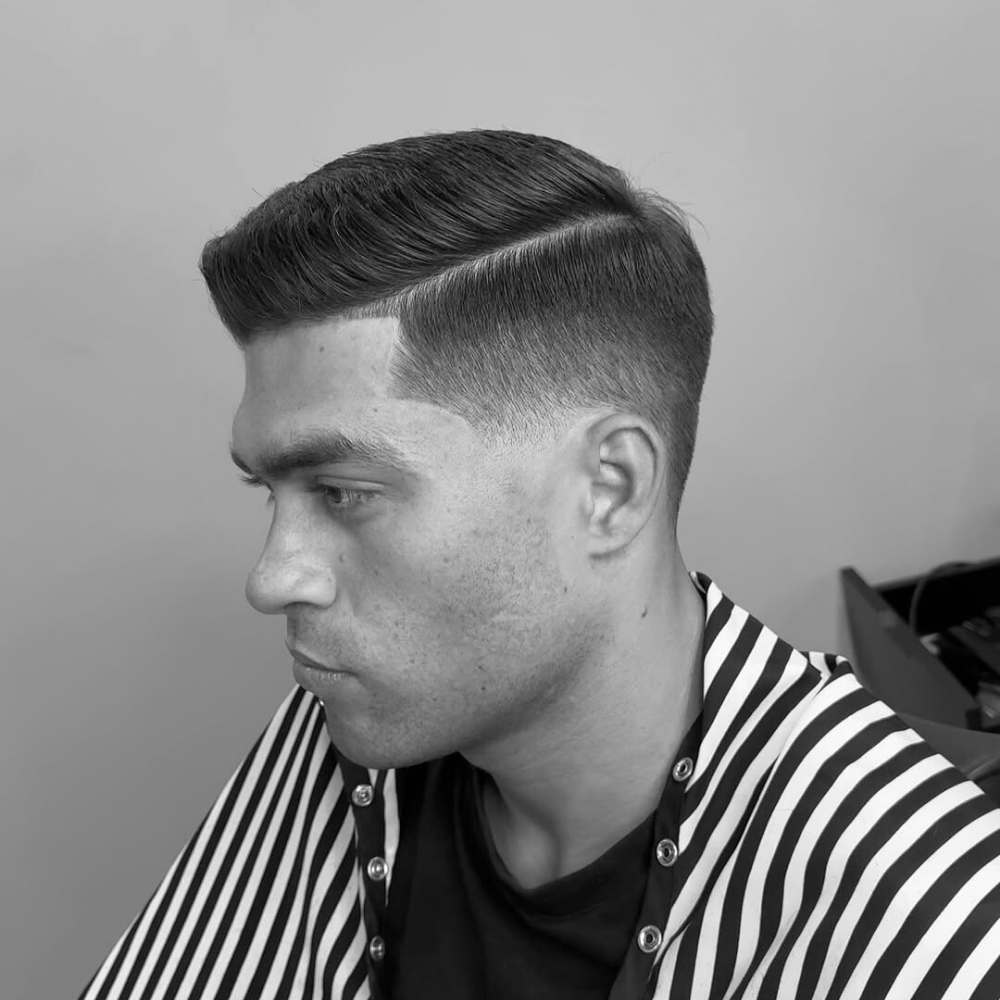
A timeless style where the taper adds sharp definition to the sides and back. It balances a clean, professional shape with just enough modern edge to work outside the office.
Crew Cut
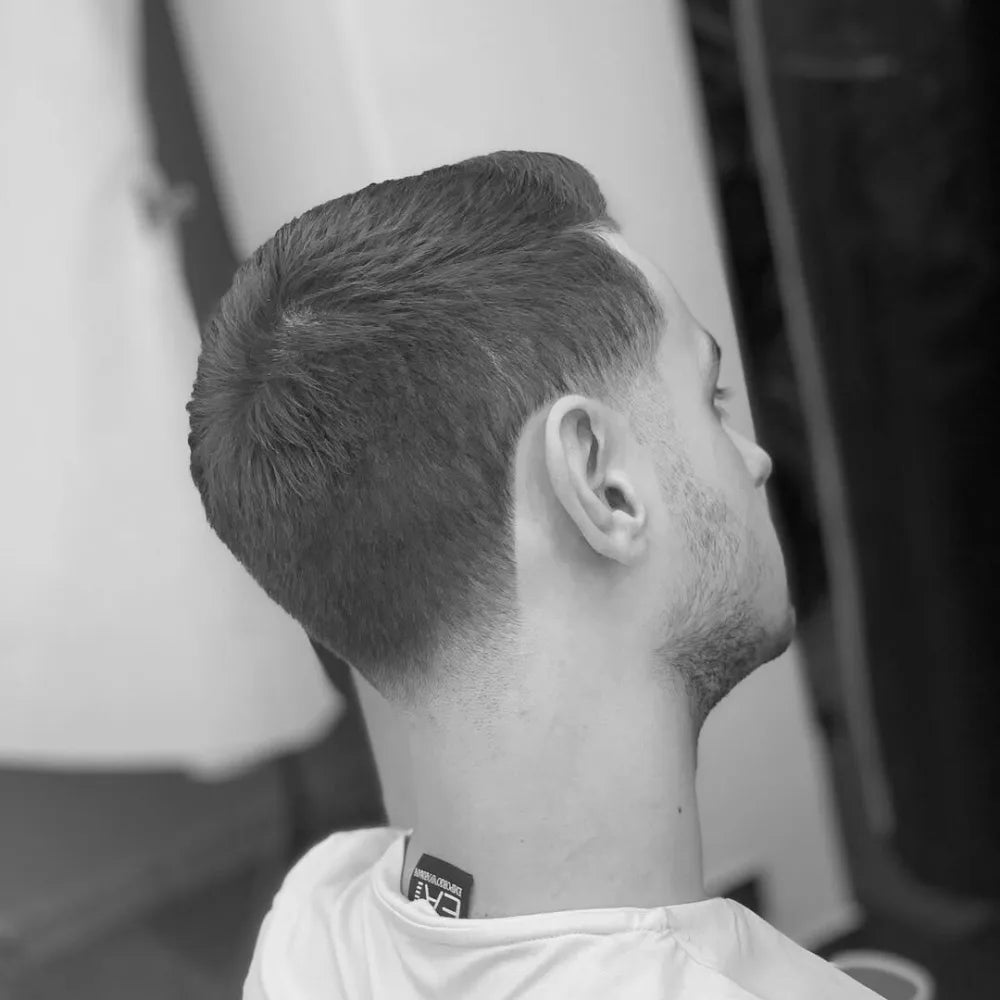
Short, masculine, and easy to maintain, the crew cut becomes more versatile with a taper. The softer blend smooths the military roots of this cut, making it suitable for any setting.
Comb Over
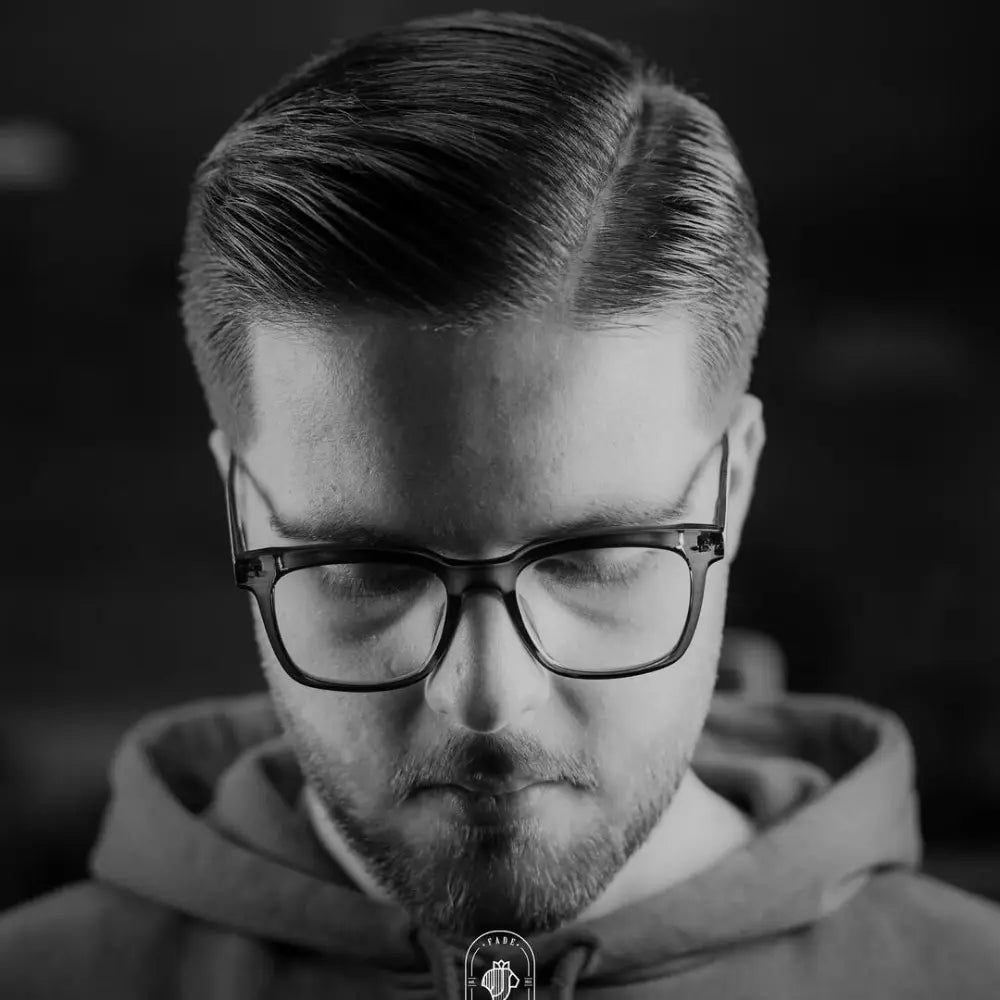
A polished choice that works with straight or wavy hair. The taper keeps the sides neat while giving the top enough structure to hold volume and shape all day.
Buzz Cut with Beard
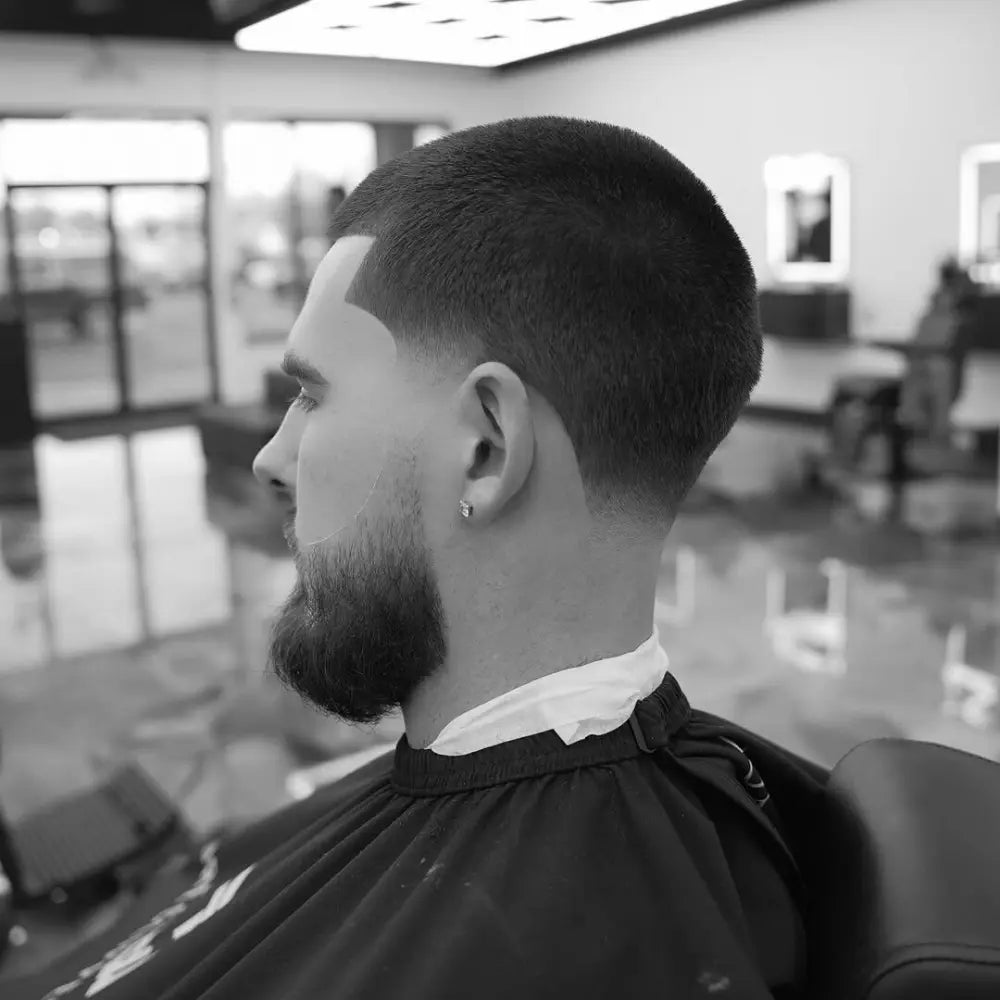
Minimal effort with maximum style, this pairing delivers a bold, masculine look. The taper creates a seamless transition from the short top into the beard for a balanced finish.
What Is a Drop Fade?
A drop fade is a modern haircut where the fade line curves down behind the ears, creating a distinctive arc into the neckline. This shape adds depth and definition, giving the cut a sharper, more sculpted look.
Because of its precise shape, this fade requires more frequent upkeep to keep the curve crisp. It’s a bold choice that enhances bone structure and works well for men who want their haircut to stand out.
Drop Fade Characteristics
- Blending Style: Curved fade line that drops behind the ears and tapers tightly into the neckline.
- Contrast Level: High contrast between the sides and the hair on top, creating a sharp, eye-catching profile.
- Maintenance: Needs a trim every 1–2 weeks to keep the fade line defined.
- Styling Versatility: Pairs well with modern, voluminous hairstyles such as pompadours, faux hawks, and textured crops.
- Face Shape Suitability: Flatters oval, round, and heart-shaped faces by drawing attention upward and adding balance.
Best Hairstyles for a Drop Fade in 2025
This style works best with hairstyles that highlight its curve and contrast. Here are four of the strongest pairings for 2025:
Textured Crop
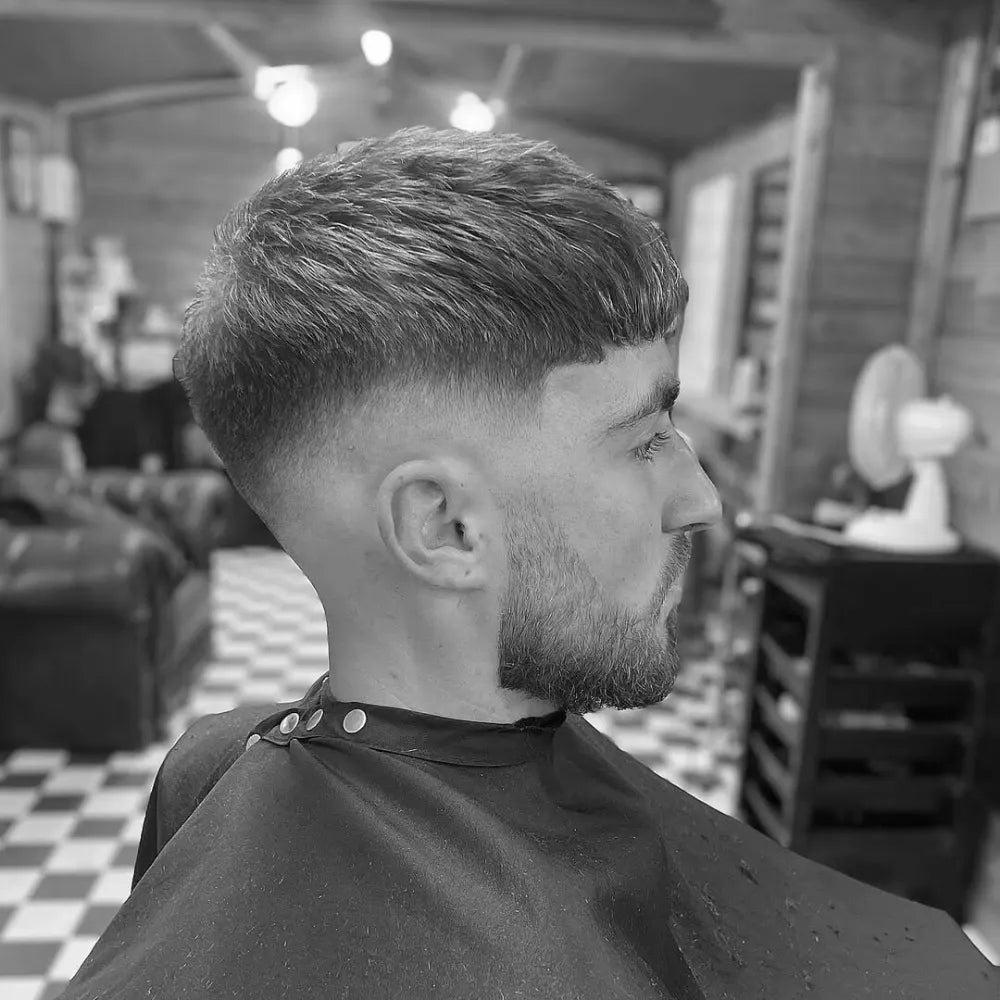
The sharp ‘drop’ frames the choppy top, adding grit and definition. This pairing works well for men who want a modern look with strong structure.
Faux Hawk
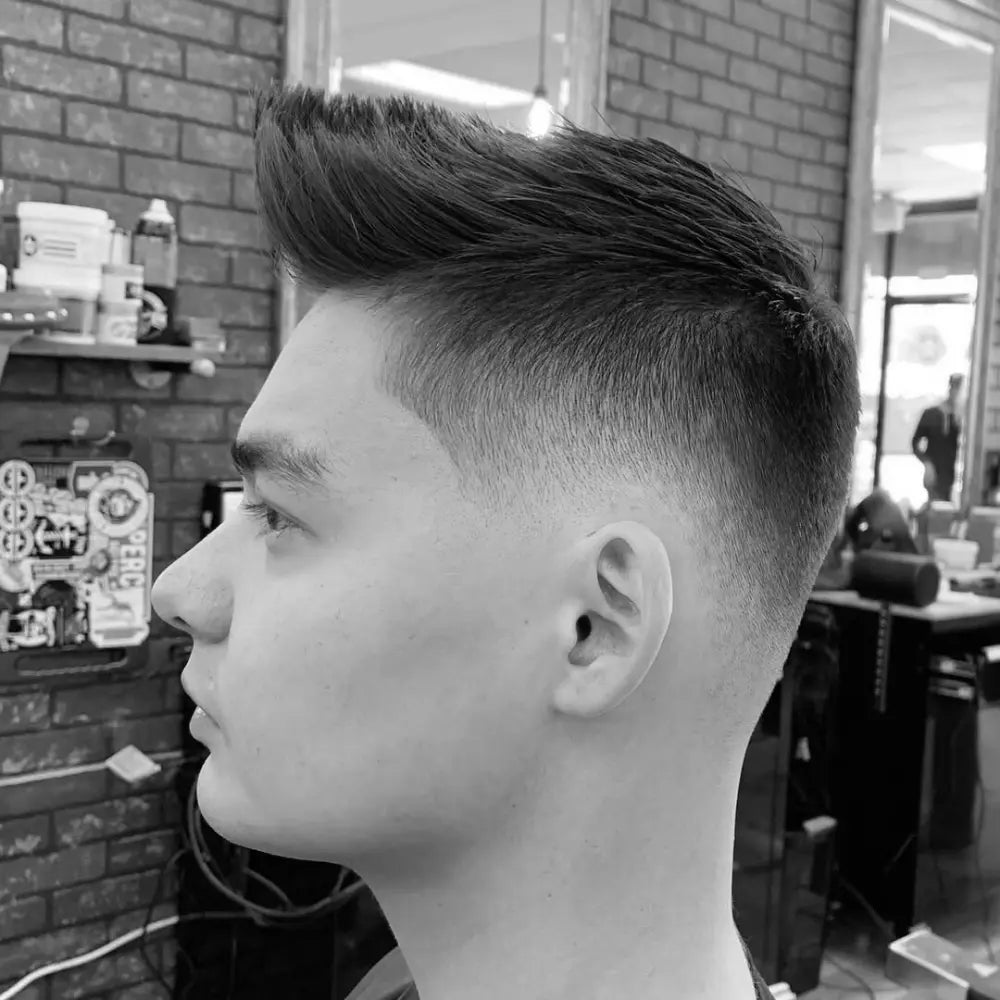
With height in the center and the sides fading down in a curve, the faux hawk gains even more movement and edge. It’s a confident style that stands out in any crowd.
Curly Top
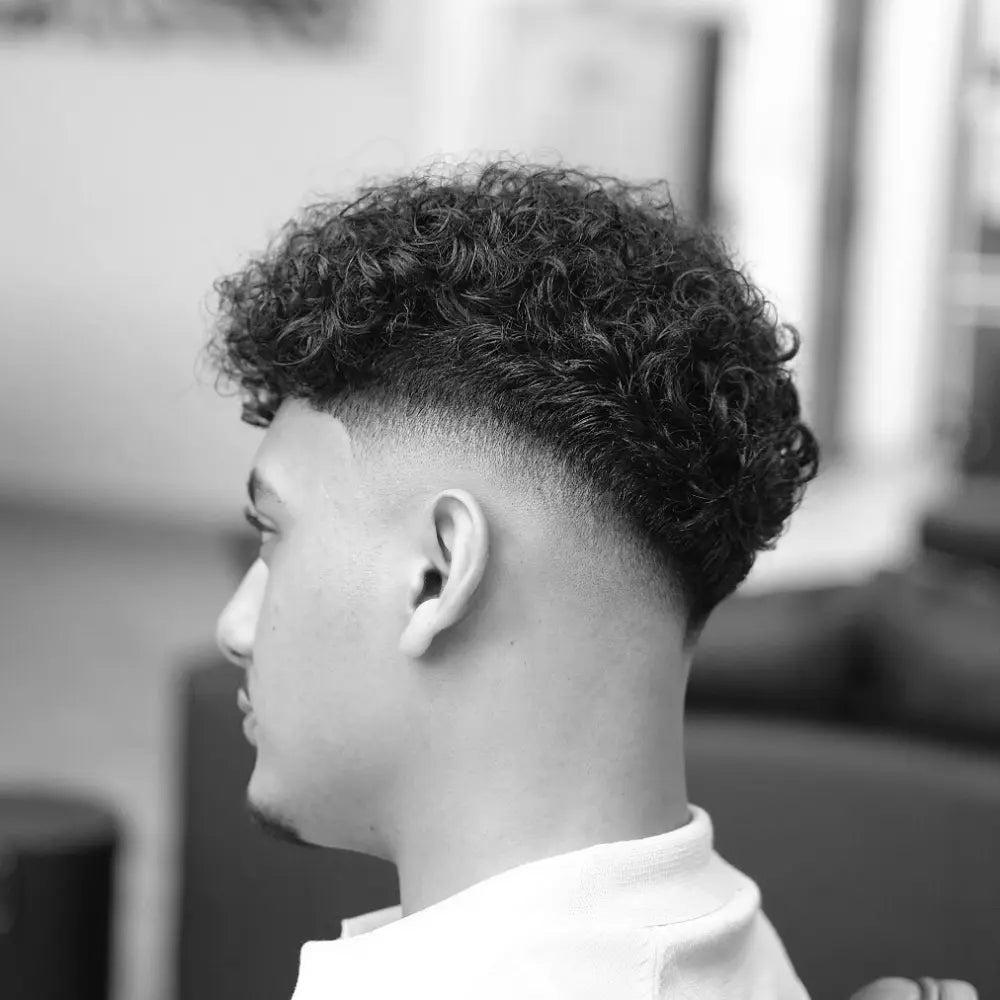
The ‘drop’ contains the volume of curls while keeping the sides tight. This balance creates a controlled yet dynamic look.
Pompadour
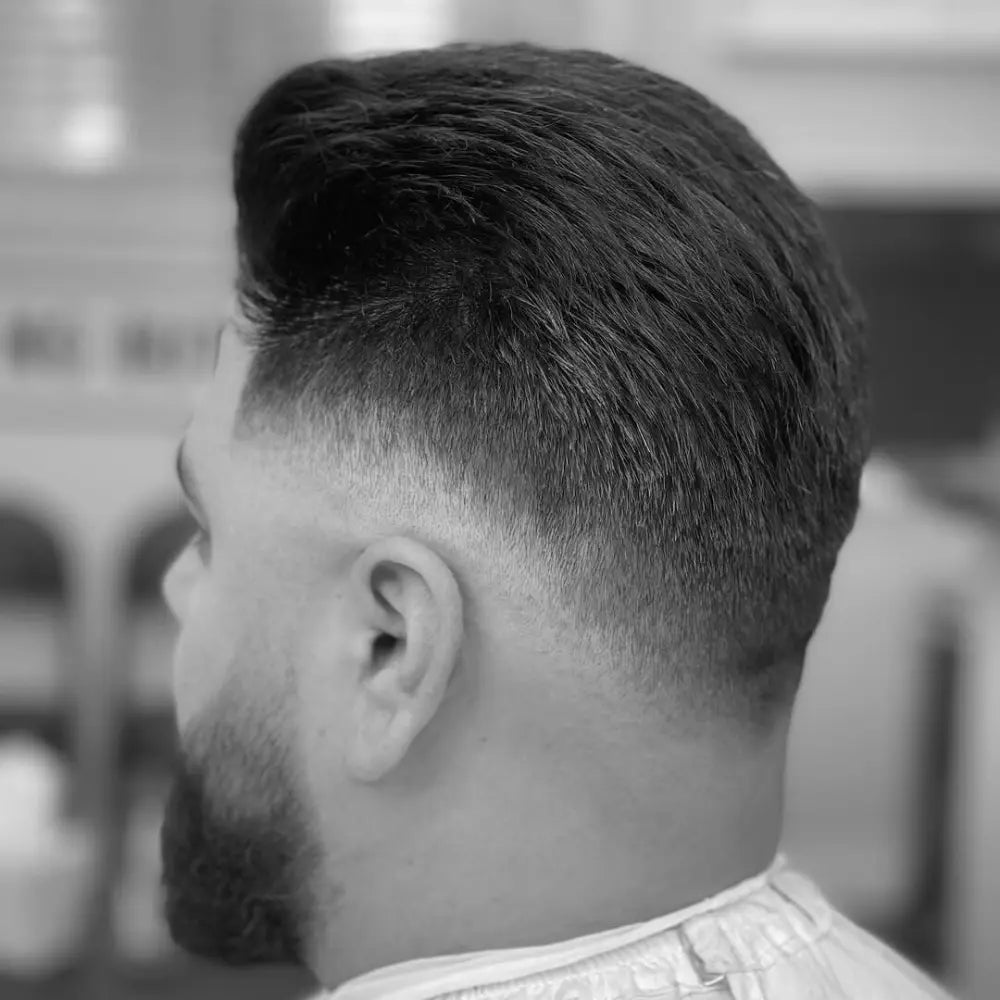
The curved fade line enhances the drama of a full, voluminous pomp. It’s a bold, structured style that makes a statement from every angle.
Drop Fade vs Taper Fade: Key Differences That Actually Matter
Understanding the differences between a drop fade and taper fade makes it easier to choose a style that fits your look, lifestyle, and grooming routine.
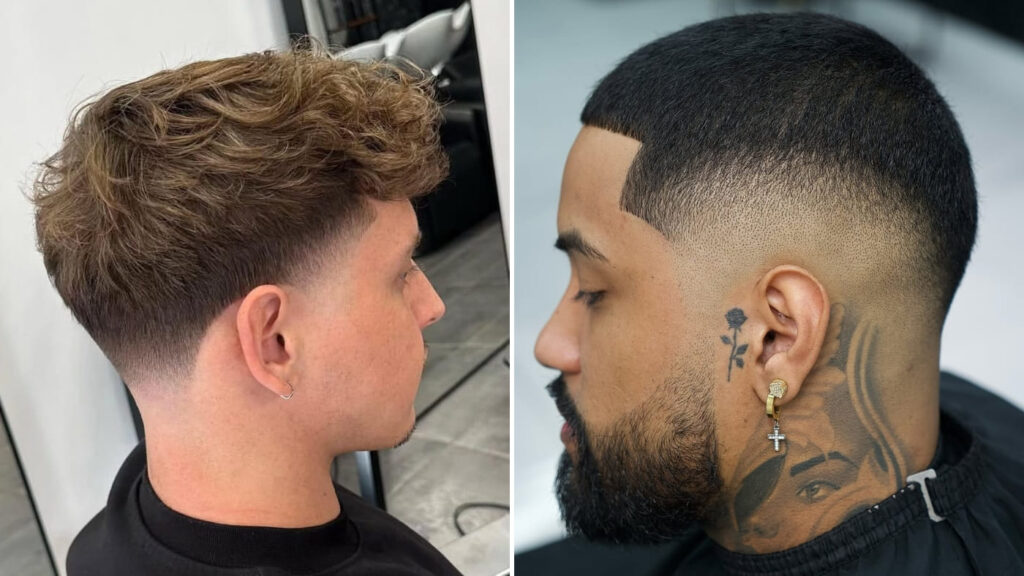
Contrast Level
- Taper Fade: Soft, gradual blend from the top into the neckline and sideburns. Avoids harsh fade lines for a refined, understated finish.
- Drop Fade: Pronounced curve behind the ears with a sharper transition. High contrast adds visual impact and draws attention from every angle.
Styling Vibe
- Taper Fade: Works with classic styles like side parts, comb overs, and crew cuts. Subtle enough for both formal and casual settings.
- Drop Fade: Pairs best with bold looks such as textured crops, pompadours, faux hawks, and curly tops. Adds modern edge and character.
Maintenance
- Taper Fade: Grows out evenly and can last 3–4 weeks before a trim. Suits men who prefer lower-maintenance grooming.
- Drop Fade: Needs a trim every 1–2 weeks to keep the curve sharp. Skipping upkeep causes the shape to lose definition.
Head Shape Enhancement
- Taper Fade: Keeps a longer, upright outline to help balance rounder or wider head shapes. Adds structure without overemphasis.
- Drop Fade: Adds a curve that changes the outline of the haircut, bringing attention to the upper head and enhancing bone structure.
Neckline Finish
- Taper Fade: Blends softly into the neckline for a smooth, natural finish that’s forgiving between cuts.
- Drop Fade: Tapers tightly into the nape for a clean, precise break. Requires more frequent touch-ups.
Beard Compatibility
- Taper Fade: Blends naturally into facial hair, creating a seamless connection with beards, stubble, or clean-shaven looks.
- Drop Fade: Works best with fuller beards and defined jawlines, but demands precise blending for a sharp result.
Face Shape Suitability
- Taper Fade: Flatters oval, long, and square faces by adding balanced structure without overpowering natural symmetry.
- Drop Fade: Best for oval, round, and heart-shaped faces by drawing attention upward and balancing proportions.
Choosing between these two styles comes down to whether you want sharp contrast or subtle blending. Both can elevate your look — the right one is simply the one that matches your style, face shape, and how often you’re willing to visit the barber.
Which Fade Fits Your Lifestyle?
Now that you know the key differences between a drop fade and a taper fade, the next step is choosing the one that works best for your daily routine and personal style. The right fade should look sharp on day one and still fit your grooming habits weeks later.
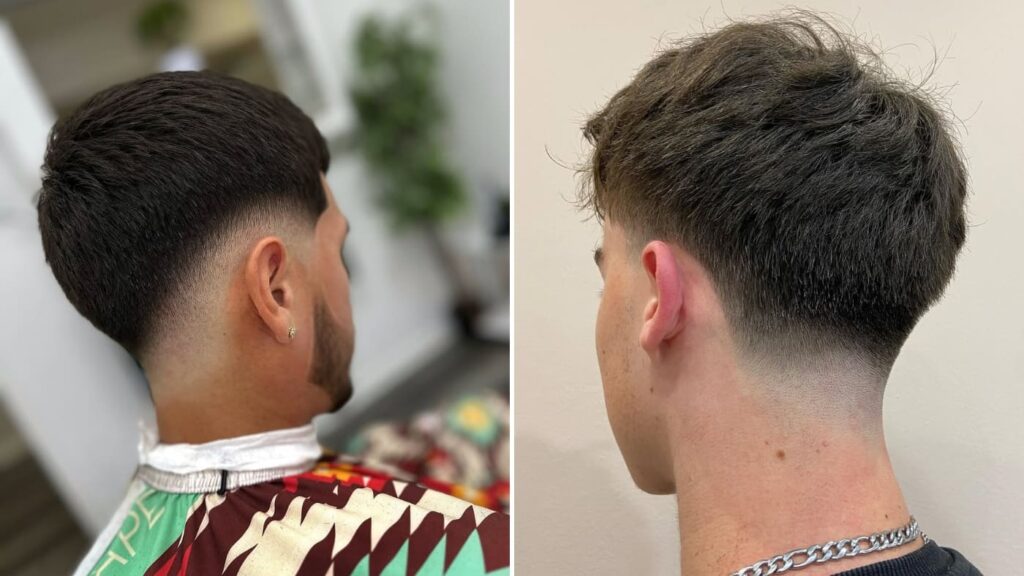
Grooming Routine
- Taper Fade: Ideal for men who prefer lower-maintenance haircuts. Can go 3–4 weeks between barber visits without losing its shape.
- Drop Fade: Best for those who enjoy frequent touch-ups. Requires trims every 1–2 weeks to keep the fade line sharp.
Styling Effort
- Taper Fade: Works with quick, low-effort hairstyles. Great for wash-and-go days or simple styling with minimal product.
- Drop Fade: Often styled with volume, texture, or definition. Benefits from daily product use for a polished finish.
Work & Personal Style
- Taper Fade: Clean and versatile. Fits seamlessly into professional settings while still working in casual environments.
- Drop Fade: Bold and attention-grabbing. Well-suited to creative or trend-forward personal styles.
Confidence Factor
- Taper Fade: Delivers a subtle boost, keeping attention balanced between your haircut and overall look.
- Drop Fade: Makes the haircut the focal point, offering a stronger, more noticeable style statement.
If you want a versatile cut that works anywhere and needs little upkeep, the taper is the better fit. If you’re after a distinctive style with strong visual impact — and you’re happy to maintain it — the ‘drop’ delivers.
Drop Fade vs Taper Fade: FAQ
Even with the key differences laid out, there are always a few quick questions guys ask before choosing between these two. Here are the answers to the most common ones, kept short and straight to the point.
What’s the main difference between a taper fade and a drop fade?
A taper shortens the hair gradually at the neckline and sideburns, blending naturally without harsh lines. A drop fade curves behind the ear and dips lower toward the nape, creating a sharper, more defined look.
Can both fades be styled the same way?
Yes, but they suit different approaches. Drop fades work best with bold, textured styles, while tapers complement clean, classic cuts.
Will a drop fade make my face look slimmer?
Often, yes. The curved fade line draws attention upward and can add balance to rounder face shapes.
Is a taper fade more professional?
Generally, yes. The softer transition of a taper fade works seamlessly in formal settings without drawing too much attention.
Do both fades work with curly hair?
Absolutely. The drop fade keeps curls contained with sharp edges, while the taper fade creates a smoother transition for a softer outline.
Whether you’re after sharp definition or subtle blending, these answers should help clear up any last doubts. From here, it’s simply about picking the fade that feels right for your style, your face, and your routine.
Final Thoughts: Drop Fade vs Taper Fade
Choosing between a drop fade and a taper fade is about more than looks — it’s about finding the cut that fits your lifestyle, flatters your face shape, and matches the level of upkeep you’re willing to commit to.
If you want bold contrast and a cut that stands out instantly, the drop fade delivers. If you prefer a subtle blend with versatility in any setting, the taper is your best bet. Both are timeless styles that, in the hands of a skilled barber, will keep your look sharp and intentional.

